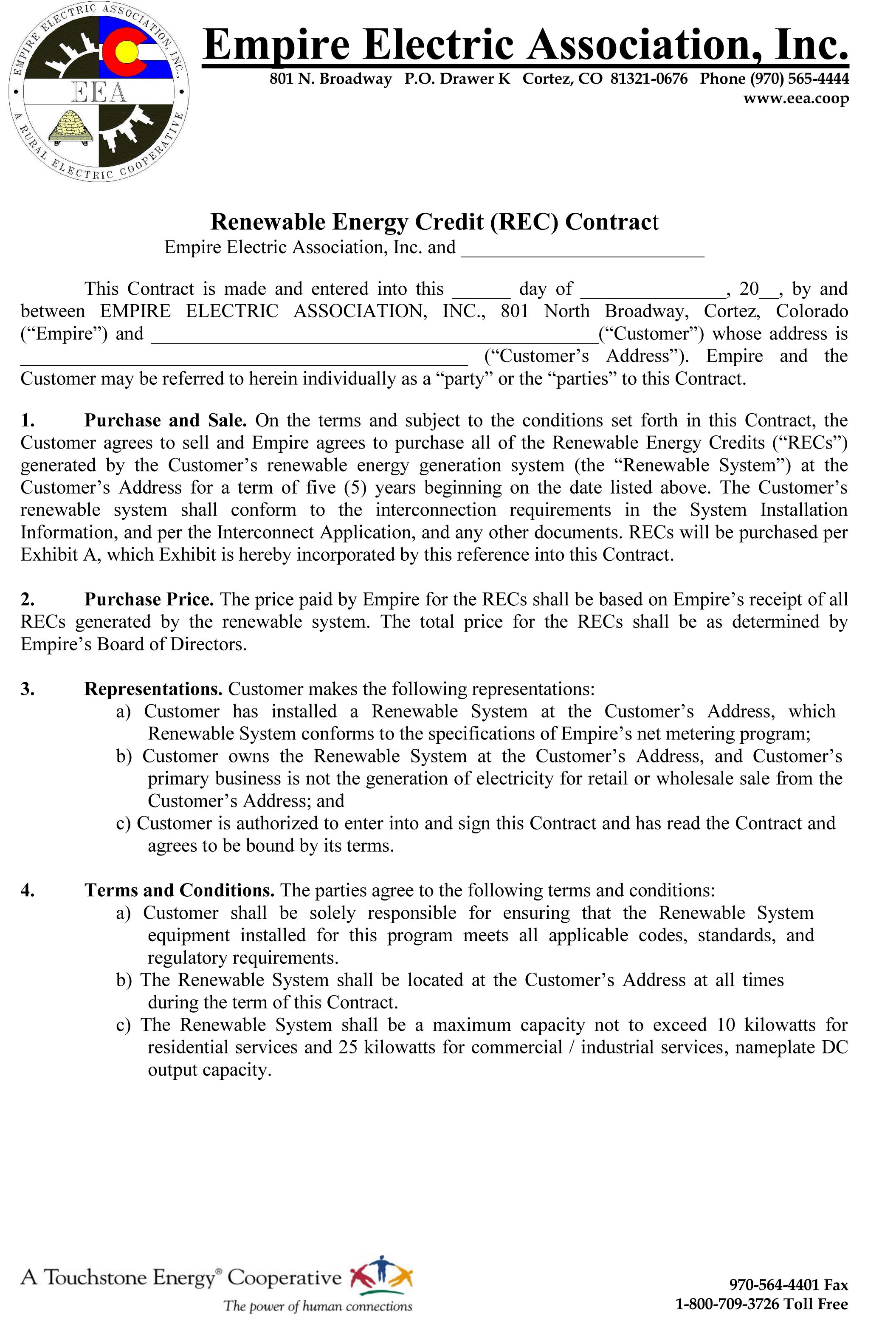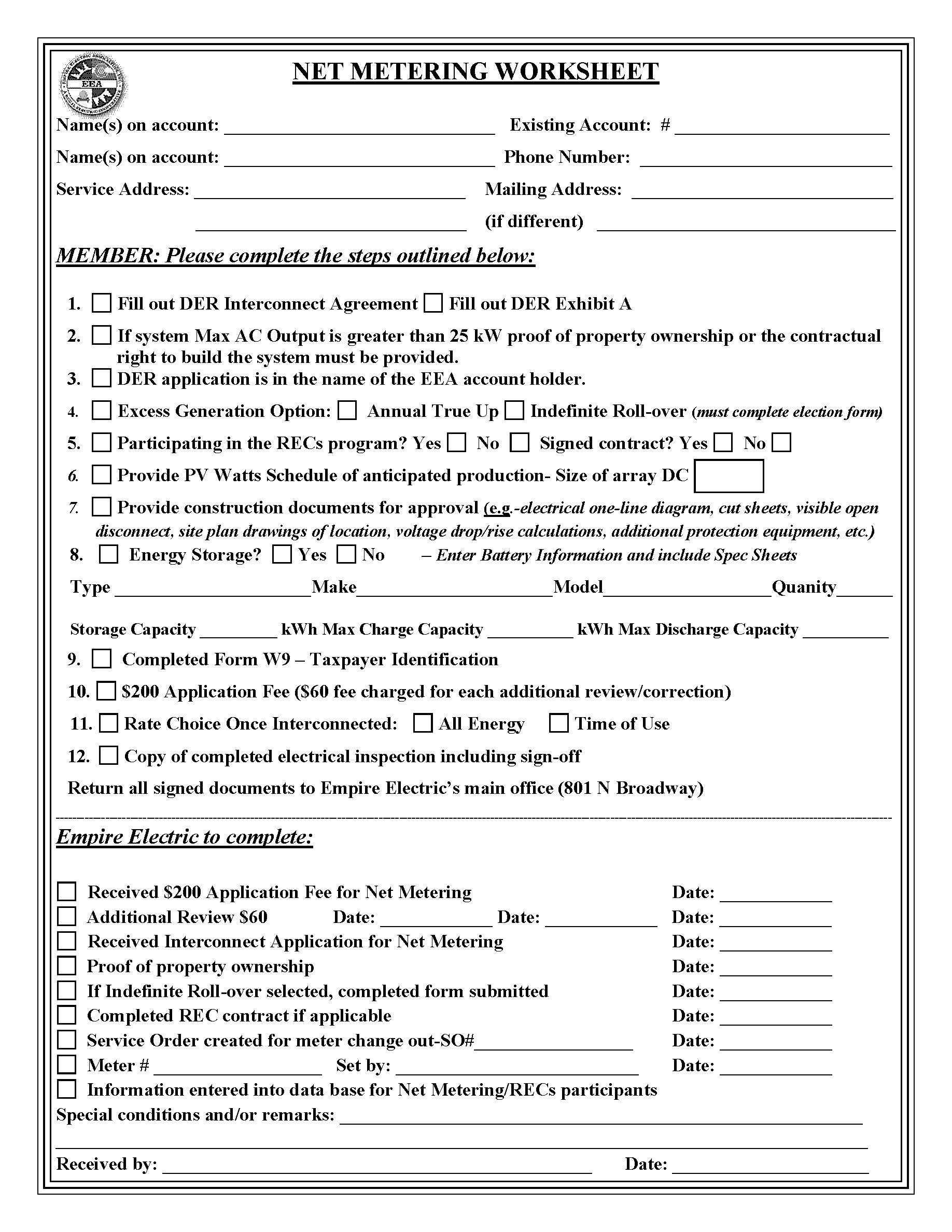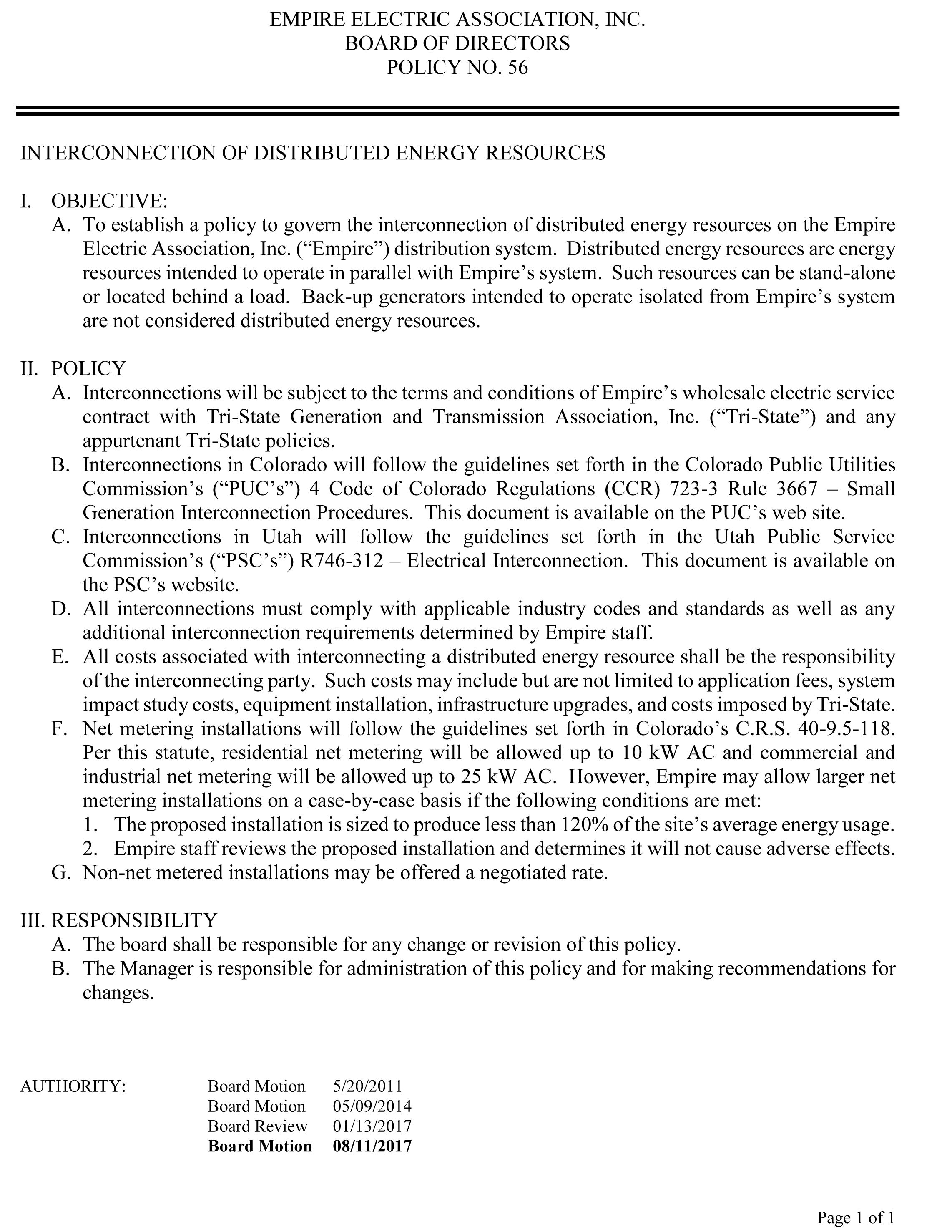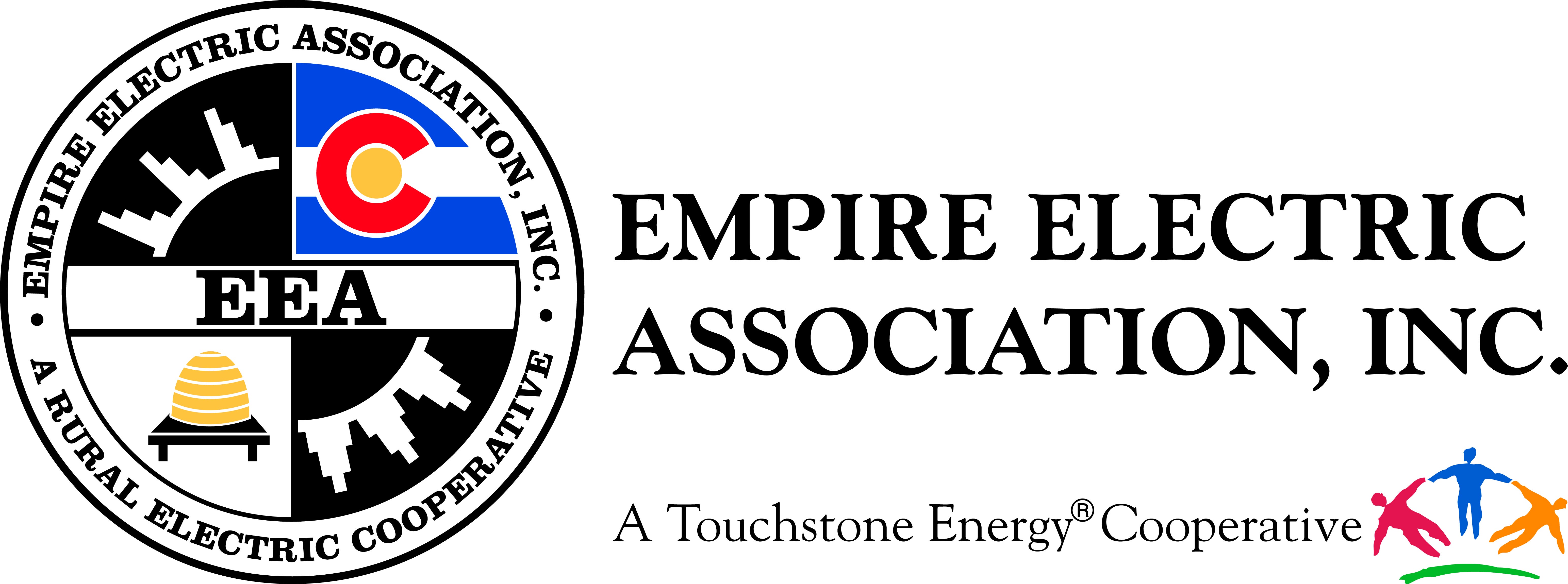Sun powered, EEA supported.
For more information about how EEA supports distributed generation and distributed energy resources, contact energy_management@eea.coop or call the Energy Management Advisor at (970) 564-4450.
Learn More
Distributed energy resources (DER) systems are small-scale power generation or storage technologies used to provide an alternative to or an enhancement of the traditional electric power system. DER systems also serve as storage devices and are often called distributed energy storage systems (DESS). DER systems may include the following devices/technologies:
-
Combined heat power (CHP), also known as cogeneration or trigeneration
-
Fuel cells
-
Hybrid power systems (solar hybrid and wind hybrid systems)
-
Microturbines
-
Photovoltaic systems (typically, rooftop solar PV)
-
Reciprocating engines
-
Small wind power systems
-
Stirling engines
-
or a combination of the above. For example, hybrid photovoltaic, CHP and battery systems.
DER and distributed generation (DG) resources, refer to power generation at the point of consumption. Distributed generation is generated or stored by a variety of small, grid-connected devices referred to as distributed energy resources. Generating power on site, rather than centrally, eliminates the cost, complexity, interdependencies, and inefficiencies associated with transmission and distribution. These approaches employ small-scale technologies to produce electricity and are located close to the load they serve. Some examples of DG are: solar panels on the roofs of homes and buildings, small hydro, biomass, biogas, geothermal power, and wind turbines.
When an owner of a DG resource wants to connect their facility to their utility’s distribution system, they are required to go through a process. The distribution system is made up primarily of the poles and underground lines that are located and connected to every house or business. It is through this system that DG is able to use its own generated power when the sun is shining, the wind is blowing, or the water is flowing. When the resource is not available and their system is not generating electricity, they can purchase power from the utility. Along with this, and with the use of a special meter installed by the utility, any electricity not needed or used by the home or business of the DG member, but that was generated by their DG system, can be added to the electricity of the utility’s distribution network. This arrangement is called net metering and is intended to allow the utility’s members to offset their electric energy consumption.
It is now possible to combine technologies such as photovoltaic, batteries and cogeneration to make stand alone distributed generation systems.
The first distributed generation system in EEA's service territory was a grid-tied solar array at Battle Rock Charter School, located in McElmo Canyon. The 2.8 kW photovoltaic array was connected in August 2005. The school's director, Matt Lindsay-Paek initiated the system to help reduce the school's energy draw from the grid and to educate students about energy usage. The entire system was set up to be monitored by the students through a computer program tied into the inverter. The meter readings can be used to calculate the classroom's energy usage.
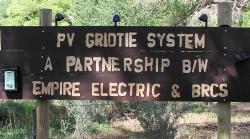
When you become an independent generator of solar energy, your home will have two sources of electricity: the EEA power system and your solar energy system. Understanding how your home uses energy will help you manager your net metered account.
Members with solar systems often ask EEA, "How much power did my solar system generate last month?" or "How much power did we use in our home?" only to learn that EEA can no longer provide this information when you become a net metered customer.
To put it into perspective, think of your solar energy system as an energy source like natural gas or propane. Once you install solar panels, you are tapping into an energy source that EEA does not deliver, maintain, or meter, and we can no longer provide total energy consumption information to you. We can, however, help you find the information you will need to calculate this yourself. Understanding how your home uses power is the first step to managing your independent solar energy generation.
As a net-metered customer, you can be a net-user, a net-generator, or completely reliant on the EEA system for your power - depending on the production of your system.
-
Net User: Your home will use all of the energy produced by your solar system before going to the EEA system for additional power. Whenever your home pulls power from the EEA system, that energy is recorded on the delivered channel of your net meter. The delivered channel reading represents what power your home needed after using all available solar energy and is not a measurement of your home's total energy consumption.
-
Net Generator: When you are producing more energy than your home needs, your excess energy goes back to the Empire system. That "leftover" amount is reflected on the received channel of your meter. The received channel of your electric meter does not record the total production of your solar system, rather it tells you how much excess power you had after your home used all of the available solar generated power.
-
System Power: If your solar system is not generating any power, your home will pull 100 percent of your power needs from the Empire system. Any power pulled from the Empire system is recorded on the delivered channel of your meter and reflected as an Energy Charge on your bill.
EEA only measures the energy on the utility side of the meter to track what you use from the EEA system and any excess energy your system puts back. When you receive 100 percent of your electricity from EEA, we can easily provide your monthly consumption totals. As a net-metered customer, you are an independent generator of power and your solar energy system is not metered or maintained by EEA. Since we don't meter your solar energy system, it is not possible for EEA to provide you with a production total for your solar system.
Many solar contractors offer tools to help you track the production of your solar system. To assess your home's total energy consumption, you will need the solar production data from your solar contractor, and the delivered and received meter readings from your EEA meter.
Net energy is the total energy delivered to you from EEA minus any excess generated power you put back on the EEA system. Net energy is not displayed, but is easy to calculate with the information on your net meter.
To calculate your net energy, take the delivered energy and subtract the received energy displayed on your meter. As an example, using this meter display image, 300 kWh would be the net total energy. Calculate this by subtracting 200 kWh on the received display (#2) from 500 kWh on the delivered display (#1).
Example: 500 kWh - 200 kWh = 300 kWh Net Energy Use
Net metered services have Delivered, Received, and Net energy is shown on your billing statement each month. You can also see your energy information by logging in to your SmartHub account and looking in the "My Usage Menu" and clicking on "Net Meter Analysis".

Renewable energy credits (RECs) are tradable, non-tangible energy commodities that represent proof that one megawatt-hour (Mwh) of electricity was generated from an eligible renewable energy resource and was fed into the shared system of power lines that transport energy. These certificates can be sold and traded or bartered and the owner of the REC can claim to have purchased renewable energy.
Energy from any grid-tied source is bought and sold with contracts specifying the generator and purchaser. In the trade of renewable energy, RECs specify that a unit of renewable energy was generated. Because once electricity is placed on the electrical grid, it mixes with electricity from multiple sources and becomes indistinguishable.
There is a Colorado State mandate that utilities achieve their total energy performance portfolio with a certain percentage of renewable resources. As EEA's wholesale provider, Tri-State Generation and Transmission Association is tasked with assuring the distribution cooperatives served by Tri-State meet this mandate by procuring renewable assets both within Colorado and elsewhere. A portion of Tri-State's funding is for purchasing RECs from consumer-members of the cooperatives they serve. This portion is capped at 0.005 percent of the total revenue that each respective co-op pays to Tri-State.
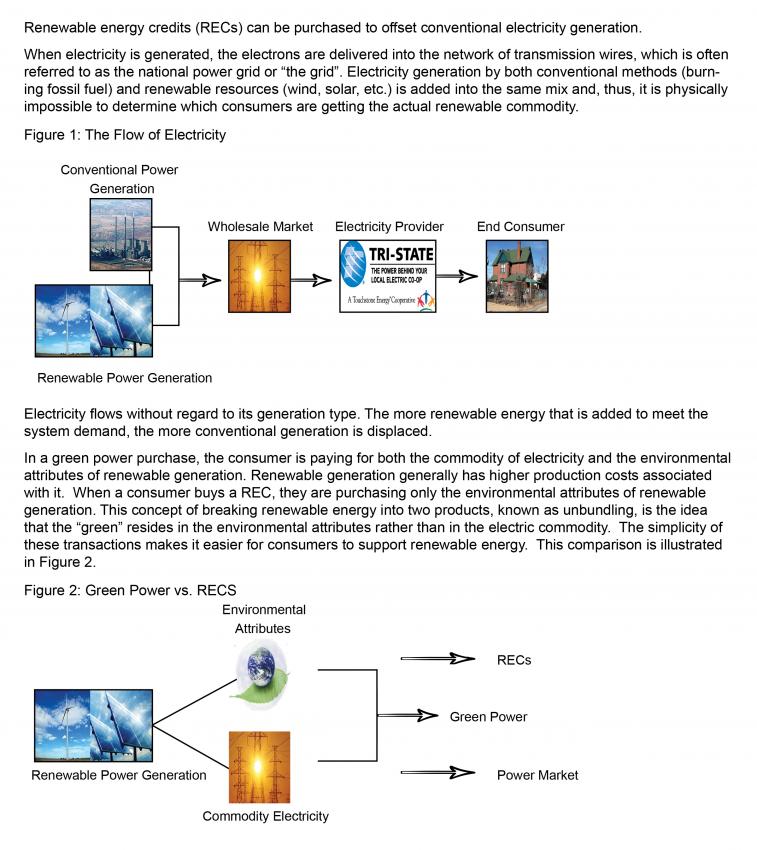
By Chris Dorsi, a nationally recognized energy expert for Saturn Resource Management, Inc.
Photovoltaic systems harness the power of sunlight to create electricity. They have become increasingly popular in recent years as the price of electricity has increased. Though costs have come down, PV systems are still quite expensive, and the energy they produce costs several times that of utility-supplied energy.
Photovoltaic systems are most commonly installed on the roofs of homes, garages, carports, greenhouses, and other structures. But they can also be installed vertically against a wall of a home, as part of an awning, or near the ground as a free-standing structure.
Some sites perform better than others for producing photovoltaic power. The size and orientation of your home, the presence of shade, and possible zoning restrictions all affect the location of a PV system. A PV system will produce the most power when it is exposed to sunshine for as long as possible each day. Any shading, from trees or an adjoining building, will reduce the system’s output. But a little shade is acceptable, especially if it crosses the photovoltaic panels early or late in the day. Shading issues are usually the worst in the winter when the sun’s altitude is lowest and shadows are the longest.
For many building owners, the roof is the preferred site for a PV array because it is out of the way, close to the existing electrical system, and above many objects that cast shade. Most rooftop systems are mounted on racks that stand above the roof. These racks can hold PV panels at either the same slope as the roof surface, or at a steeper angle that optimizes the exposure to incoming solar energy. Rooftop systems can also utilize solar “shingles,” thin-film modules that take the place of standard roofing shingles.
For more information on photovoltaic systems, visit the website of the National Renewable Energy Lab at www.nrel.gov/solar.
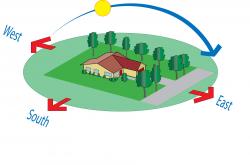
The EEA documents below are for viewing purposes only. Contact the Energy Management Advisor for fillable forms, as required.

